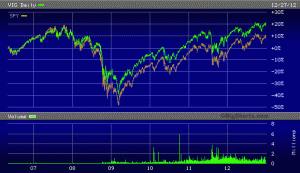By Elliott Wave International
In the wake of the Presidential election, the Social Science Research Network (SSRN) reports that the study, “Social Mood, Market Performance and U.S. Presidential Elections” has earned the #3 spot among the most-downloaded papers in the past 12 months.
The SSRN eLibrary is one of the world’s leading social science resources and includes 430,000 paper abstracts from 200,000 authors. It has delivered close to 56 million downloads, and last year it received over 66,000 new submissions.
Among those submissions: the elections paper written by a team from the Socionomics Institute.
Authored by Robert R. Prechter, Jr., Deepak Goel, Wayne D. Parker and Matthew Lampert, the study amounted to a bold challenge to conventional wisdom about the factors that predict presidential re-election outcomes.
“We demonstrated a counter-intuitive point about what matters, what doesn’t and why,” Prechter said.
Watch a FREE video presentation by Bob Prechter now!
Historians and political scientists have long argued that gross domestic product (GDP), unemployment and inflation have great bearing on presidential elections. So Prechter et.al. tested those ideas. They studied every presidential re-election campaign dating back to George Washington’s successful bid in 1792. And what they found was amazing.
“GDP was a significant predictor in some of the simple models,” said Deepak Goel, “but it was rendered insignificant when we combined it with the stock market in multiple regression analyses. Inflation and unemployment had no predictive value in any of our tests.”
So what does matter?
The stock market. Specifically, they found that the stock market’s performance for the three years prior to Election Day does predict elections. But an even bigger finding came when they examined the question of whether or not money made or lost in the market had any effect.
“We contrasted eras when stocks were widely owned vs. hardly owned, and there was no difference in results,” Robert Prechter said.
They ruled out GDP, unemployment, inflation and money made or lost in the market as factors. That left only one. Matt Lampert explained:
“The best explanation is that the trend of social mood is important in driving the valuations of both stocks and presidents.”
Watch a FREE presentation on the paper — given by Bob Prechter himself — at the 2012 Social Mood Conference. Simply follow this link >>
And you can also download the paper free from SSRN.
This article was syndicated by Elliott Wave International and was originally published under the headline Social Mood and Elections Paper #3 Among Top 10 Most Downloaded from SSRN. EWI is the world’s largest market forecasting firm. Its staff of full-time analysts led by Chartered Market Technician Robert Prechter provides 24-hour-a-day market analysis to institutional and private investors around the world.



